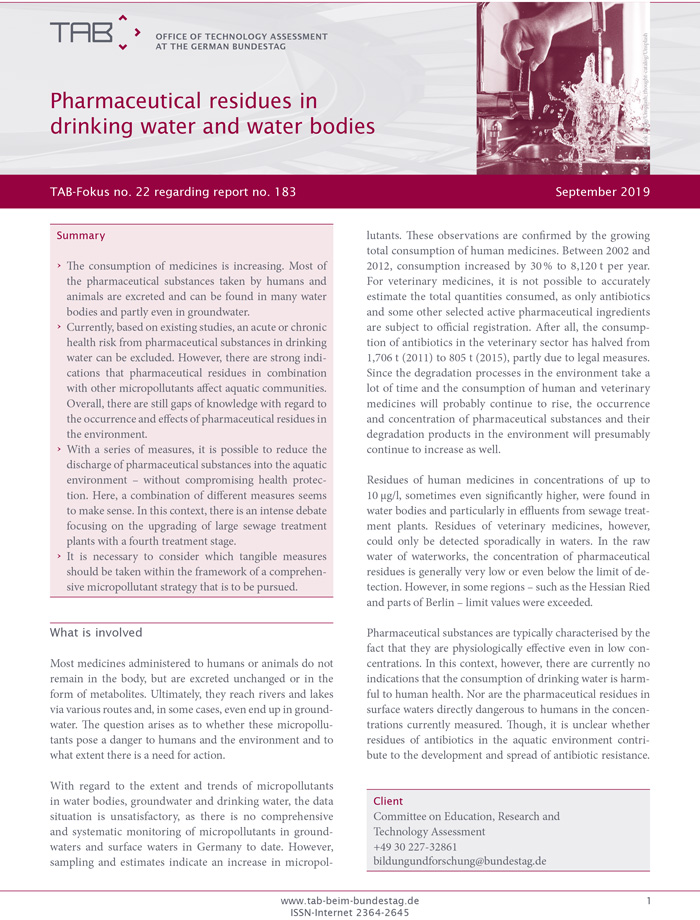Pharmaceutical residues in drinking water and water bodies
Against the background of a steadily increasing consumption of pharmaceuticals, TAB presents with the Working Report no. 183 »Pharmaceutical Residues in Drinking Water and Water Bodies« and the associated policy brief in English a concentrated overview of the state of knowledge on quantities, qualities and effects of micropollutants on humans and the environment, compiles proposals for avoiding the contamination and identifies gaps in knowledge and possible strategies for action to reduce the risks from pharmaceutical residues in water.
The resulting report provides a detailed overview of which human and veterinary medicines are used in which quantities in Germany. Moreover, it states which of them – according to the current state of knowledge – are relevant in human and ecotoxicological terms with regard to their quantity or effect.
The report analyses the conflict of objectives between individual claims for cure by medicines on the one hand and the potential risks of pharmaceutical residues with regard to general health and the environment on the other hand. Due to the fact that the occurrence of negative effects is uncertain, there is a debate with regard to the question what evidence and support the precautionary principle can provide in coping with these conflicts.
The report systematically presents considerations on technical measures and regulatory strategies aiming at reducing the risks of pharmaceutical residues in water bodies. This also includes the so-called fourth treatment stage of sewage treatment plants, which is currently the subject of intensive discussion and which can remove micropollutants from waste water to a large extent. Regulatory measures, for example in connection with the drug approval process, or information measures that try to raise awareness among consumers, medical professionals and pharmacies are focusing more intensely at the source of contamination. There is a debate on how to combine the various options in a reasonable way and how to integrate them into a comprehensive strategy. Moreover, it has to be clarified which role the various public and private stakeholders in society will play with regard to strategy development, decision-making and implementation.
The main findings of the report are also presented in English in the associated policy brief TAB-Fokus no. 22.
17.01.2020
Downloads:
- TAB-Fokus no. 22
Pharmaceutical residues in drinking water and water bodies. - TAB-Arbeitsbericht Nr. 183
Arzneimittelrückstände in Trinkwasser und Gewässern. Endbericht zum TA-Projekt. - TAB-Fokus Nr. 22
Arzneimittelrückstände in Trinkwasser und Gewässern.
Further information:

